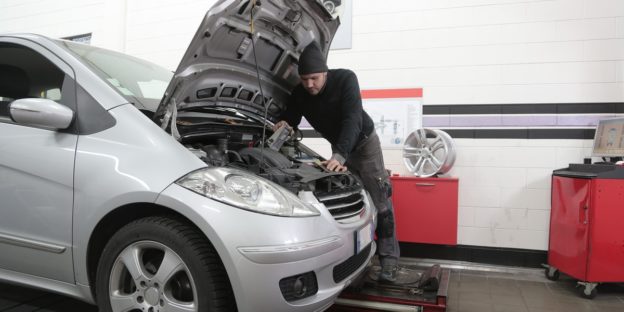A used car might be the perfect addition to your household! You can save money while getting a great vehicle with much of the latest technology such as back-up cameras, heated seats and Bluetooth. And with a lower car price, you can also enjoy lower monthly payments and lower auto insurance rates. It’s a win-win!
To ensure that you get the best bang for your buck, here are four mistakes to avoid when buying a used vehicle.
1. Not Lining Up Financing
Any time you plan to purchase a new or used vehicle, it’s best to secure financing in advance. While it’s more convenient to do so at the dealership, you’ll also pay a higher interest rate. Dealers add a markup to the interest rate offered and are incentivized to send you to certain lenders, even if you can get a better APR somewhere else.
By getting quotes and comparing rates beforehand, you’ll be in good shape when you go to buy a used car. And if you want to get dealer financing because of its convenience, you’ll at least have some negotiating power. Fortunately, you can compare quotes online from the comfort of home.
2. Only Looking at Monthly Payments
If you can buy a used car outright, you can save a lot of money over the long run. If you can’t afford this, then you’ll have to create a budget and determine how much you can afford. But, keep in mind that while a lower monthly payment may be good for your budget, you could be paying back more money in the long run due to compounding interest.
If you can swing a slightly higher monthly car payment in exchange for a shorter loan term, it’s probably worth it. You can also consider leasing a used car, though not all dealerships offer them, and there are certain conditions to meet.
3. Passing on a Test Drive
Another mistake you want to avoid is not doing a test drive. There are certain instances where you might not be able to do a test drive, such as when buying a repossessed vehicle from a bank or buying a car out of state. But in most cases, you can test drive a car and make sure that it’s running properly.
Even if you can’t do a test drive for some reason, you should still ask to do an inspection. You can always hire a mechanic for an out-of-state car, or you can bring along a mechanic or knowledgeable friend when buying a repo car. Doing your due diligence is the best way to avoid buyer’s remorse.
4. Not Running a Vehicle History Report
A vehicle history report should also be run for any used car, along with the test drive and mechanic checkup. This report will check for any previous accidents, problems with the car and the number of previous owners. Dealers will typically pay for this report, but if you’re buying from a private seller, you might have to pay for it on your own.
Fortunately, vehicle history reports are inexpensive and usually cost around $10 to $40. You can get this report from a number of third parties such as Carfax, AutoCheck and instaVIN. No matter where you get the report from, you will be able to see the title history and other important details about the car.
Used cars are an investment, just as new cars are. By avoiding the mistakes above, you’re more likely to invest in a quality vehicle that you can enjoy for years to come.











